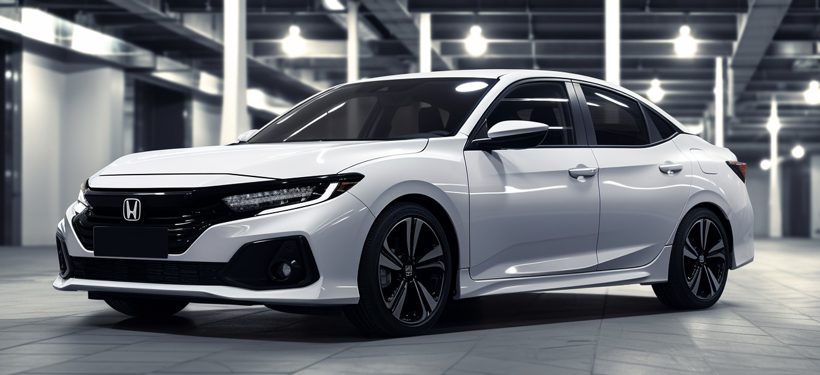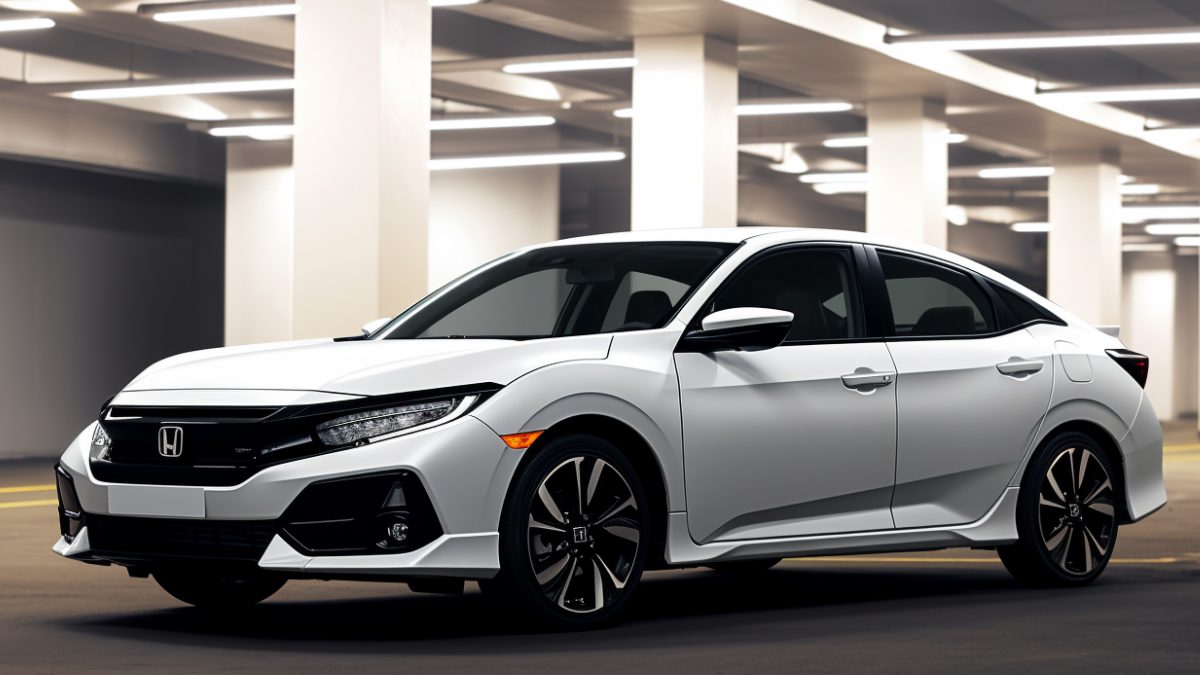Brake Light On Dashboard Goes On and Off – Reasons and Fixes!
Your vehicle’s brake light should always illuminate when the parking brake is engaged. But what happens when it goes on and off even when the parking brake is not engaged?
Why brake light on the dashboard goes on and off? It could mean your brake fluid levels are below the minimum. If this is not the case, the parking brake could be slightly engaged. Other reasons for the light going on are
- Worn brake pads
- Faulty sensors
- A bad emergency brake switch
- A faulty master cylinder
So then, how do you fix a brake light that keeps flashing on and off? Let’s take a look at the possible solutions.
Causes and Solutions of Brake Light on Dashboard That Goes On and Off

In this table, you can find a summary of the typical causes of the brake light coming on and off and the solutions.
| Causes | Possible Solutions |
|---|---|
| Insufficient Brake Fluid | Add more fluidRepair any leaking componentsReplace the brake pads |
| Emergency Brake Not Properly Released | Remove any rust on the parking brake cablesReplace any damaged cables |
| Defective Sensors | Replace the damaged sensors |
| Shorted Emergency Brake Switch | Replace any blown fuses and damaged wiringInstall a new switch |
| Worn Brake Pads | Replace the padsInstall new calipers or rotors if they are damaged |
| Faulty Master Cylinder | Replace the worn sealsInstall a new master cylinder |
Why Brake Light On the Dashboard Goes On and Off
Sometimes, the red or orange brake warning light may come on and off despite disengaging the parking brake. Here is what causes this problem.

1. Inadequate Brake Fluid
The primary reason the brake light will go on and off is when your car is running low on brake fluid. Generally, the causes of low fluid levels include:
- A leak in the master cylinder or brake fluid line
- Worn brake pads
- Damaged brake lines

Diagnosing and Fixing the Problem
Follow these steps to correctly identify and fix low brake fluid problems.
Step 1: Open the brake fluid reservoir under your vehicle’s hood. Then, check the fluid level against the “minimum” and “maximum” lines. If the fluid is at the minimum level or below, top it up.
Step 2: Get under the dash and check on your pedals for brake fluid. If there is a leak, replace the master cylinder seals. Here is how the replacement is done:
- Locate the master cylinder. It should be on the driver’s side of the engine bay.
- Remove the brake lines, brake fluid sensor connector, and mounting bolts on the master cylinder.
- Then, remove the master cylinder and disassemble it to remove the damaged seals from the bore.
- Clean the bore and lubricate the new seals. Then, install them
- Reassemble the master cylinder and reinstall it back to its mounting location in reverse order.
- Bleed the brake system.
Step 3: Check under your car around the wheels, on the rotors, drums, and brake lines for a puddle of fluid. If you find a wet spot, replace the leaking component.
Step 4: Inspect the brake pads for wear and tear. If they are less than 1/4 inch thick, take your vehicle to a qualified technician for replacement. The job can be quite complex if you are not mechanically inclined.
2. Emergency Brake Not Properly Released
The brake light usually comes on whenever the emergency brake is activated or disengaged.
Typically, your vehicle’s emergency brake may fail to disengage entirely due to:
- Corroded, stretched, or damaged parking brake cable
- Cold weather causing the brake to freeze
- Engaging the parking brake too hard
Diagnosing and Fixing the Problem
Here is how to know if the emergency brake is activated and the solution.
Step 1: To confirm if the emergency brake is the problem, try disengaging it while stopped. If the light goes off, it is the issue.
Step 2: If the parking brake does not disengage fully and the light stays on, check the parking brake cables for corrosion and damage. Then:
- Shift into drive and reverse gears several times to dislodge the rust
- Alternatively, pump the brake pedal repeatedly or
- Clean the rust using a penetrating spray
- Next, replace any damaged cables
3. Defective Sensors
The sensors that monitor brake fluid levels in the master cylinder and determine if the emergency brake is engaged can fail.
Generally, the sensors could fail due to mechanical damage, dirt, rust, and corrosion.

Diagnosing and Fixing the Problem
To diagnose defective sensors, you will need a diagnostic tool, such as the OBD-II scanner. Then, use the tool to check for any fault codes related to the sensors. Depending on your vehicle make or model, you could get fault codes such as:
- C1028 for faulty master cylinder pressure sensor
- C1288 for faulty brake pressure sensor circuit
- C121D for abnormality in the fluid pressure sensor circuit
- 01435 for electrical circuit fault in brake pressure sensor 1
Once you determine whether the brake fluid or parking brake sensor is faulty, you will have to replace it. Here is how to do it:
- Step 1: Disconnect the negative battery cable.
- Step 2: Locate the sensor on the side of the master cylinder.
- Step 3: Remove the electrical connector to the sensor.
- Step 4: Release the sensor from the locking tabs.
- Step 5: Push the new sensor into the locking tabs and reattach the electrical connector.
- Step 6: Reconnect the battery cable.
4. Shorted Emergency Brake Switch
The parking or emergency brake switch is designed to activate the brake light once you engage the brake. Since this switch is electronic, it can short out, causing the brake light to come on and off while driving.
The causes of the parking brake switch shorting out include:
- Electrical issues like a blown fuse or relay
- Incorrect brake pedal adjustment
- Damaged wiring
- Corrosion and moisture

Diagnosing and Fixing the Problem
There are two methods to test and fix a faulty emergency brake switch. These include:
Method 1: Check underneath your vehicle’s dashboard for the emergency brake switch and unplug it. In some vehicles, the switch is located under the center console. If the brake light does not go off, you must replace the switch. Here is how the replacement is done:
- Step 1: Locate the switch. If your emergency brake is hand-style, you must remove the center console to access it. But for a foot-style emergency brake, you can find the switch under the dash or behind the lever.
- Step 2: Disconnect the electrical connector to the switch.
- Step 3: Unfasten the switch from the brake lever or its mounting location.
- Step 4: Install the new switch in reverse order.
Method 2: Alternatively, use a multimeter to check the switch’s continuity with the parking brake engaged. If you get anything below 12 volts, the switch is bad.
In this case, you should repair any damaged wiring or blown fuse and clean the corroded cables. To clean the cables:
- Step 1: Remove the cables.
- Step 2: Apply baking soda over the corroded parts.
- Step 3: Add a small amount of water. This will help activate the baking soda and remove the corrosion through a chemical reaction.
- Step 4: Use paper towels to clean and dry the cables. If there is any residue, use a wire brush to clean it.
- Step 5: Reattach the cables.
5. Worn Brake Pads
If the brake pads are significantly worn, this can cause the brake light to illuminate intermittently. However, some vehicles have a separate warning indicator for brake pad wear. Typically, brake pads may wear quickly due to the following:
- Worn, grooved, or faulty brake rotors
- Seized or dirty calipers
- Bad driving habits
- Using low-quality pads

Diagnosing and Fixing the Problem
Check out these diagnosis steps for worn-out pads and their fixes.
Step 1: If the brake fluid is okay, inspect the thickness of the brake pads through the holes in the wheel. If they look thin or less than ¼ inch, find a qualified technician to replace them for you.
Step 2: Alternatively, if the brake pads have a wear indicator, check to see if the slot is visible. If it is not or is barely visible, take your car to a professional for brake pad replacement. This is because the job is a little complex.
Step 3: Check the brake rotor and calipers for wear or damage. Then, replace them. Below is how to replace the brake pads, rotors, and calipers if you are mechanically inclined:
- Raise your car using a hydraulic jack and take off the wheel.
- Put an oil catch pan beneath the caliper. Then, disconnect the hose to drain the brake fluid.
- Remove the old caliper from the rotor by unscrewing the two bolts and securing it.
- Detach the brake pads from the caliper.
- Next, remove the rotor from the hub assembly. If this assembly has rust, use a wire brush to clean it.
- Install the new rotor on the hub assembly.
- Install the new brake pad and caliper in reverse order.
- Add clean brake fluid and bleed the brake system.
6. Faulty Brake Master Cylinder
If the master cylinder becomes faulty, it can cause the brake fluid pressure to drop. As a result, the brake light can come on and off. One of the reasons the master cylinder can become faulty is due to worn-out rubber seals.
Diagnosing and Fixing the Problem
Check the master cylinder seals for signs of cracks and damage. If worn and leaking brake fluid, replace the seals. We have discussed the procedure of replacing seals in the section of diagnosing and fixing inadequate brake fluid.
If the master cylinder is also damaged or worn from age, you should replace it. Here is how to do it:
- Step 1: Open your vehicle’s hood and locate the master cylinder on the firewall on the driver’s side.
- Step 2: Drain all the brake fluid.
- Step 3: Disconnect the electrical connector to the master cylinder.
- Step 4: Loosen and remove all the brake lines connecting to the cylinder using a wrench or socket.
- Step 5: Unscrew the mounting bolts on the master cylinder and remove them from the engine compartment.
- Step 6: Bench bleed the new master cylinder and then install it in reverse order.
- Step 7: Bleed the brake system to remove air.
How To Turn Off Brake Light On Dashboard That Goes On and Off

Sometimes, the brake warning light may stay on despite implementing all the above fixes. In this case, you could try turning the light off. To do this:
Method 1: Turn off your car and then restart your engine.
Method 2: Turn the ignition off and disconnect your vehicle’s battery if the brake light still comes on. Start by removing the negative terminal and the positive one.
Method 3: Drive your car for 30 to 100 miles. The light could reset itself. If it does not, seek assistance from a qualified technician.
While an intermittently illuminating brake light on your dashboard can be unnerving, it’s not the only anomaly you might encounter. Another puzzling issue drivers sometimes face is when the oil light activates during braking. To understand the possible reasons and remedies for this, our detailed guide can help. On a related note, if you’ve ever wondered how long you can safely drive with your brake light on, we have insights and recommendations on that topic as well. Staying informed on these matters is crucial for the safety and longevity of your vehicle.FAQs
Let’s check out some frequently asked questions about the brake light going on and off on the dash.
Yes, you can if the brakes are still working. However, you should address the problem immediately for you and your passengers’ safety.
No. If there is an issue with the anti-lock braking system, the ABS warning light will illuminate instead of the brake light.
First, you may hear squealing or squeaking noises coming from the brakes. You could also hear vibrations and grinding sounds during braking. In addition, it could take longer to stop.
Bottom Line
Whichever vehicle model or make you have, it’s not uncommon for the red brake light to flash on and off sometimes. This can happen when the fluid levels are low or the brake pads are worn out. In some cases, the light can come on and off due to defective sensors.
The bottom line is once you notice the light, you should not ignore it. This is because if you don’t fix the cause of the problem, it could lead to a more serious issue. For example, your brake system could fail while driving, putting your life in great danger.

